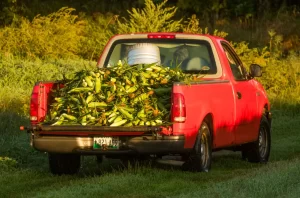The Future of Self-Driving Trucks – Revolutionizing the Industry

Successful industry revolutions require three things: a strong idea, an ambitious vision and the passion necessary to see it through to completion.
Tech startups like Embark, Aurora Innovation and Kodiak have spent years designing self-driving trucks. Now they stand to revolutionize freight transportation – here are just a few reasons why.
1. Safety
Trucking companies are giving careful consideration to how self-driving trucks can reduce accidents and make roads safer, with sensors installed that detect cars or obstacles to reduce driver distraction and keep them looking out the window less often.
Companies must also work on improving how autonomous trucks react in exceptional situations. If an autonomous truck suddenly stops, a smaller car could get caught underneath and crushed – an accident which can prove deadly.
Some developers envision a system in which autonomous vehicles would only drive on highways while human drivers remain present for local roads and loading docks – though this has yet to become reality as the public remains skeptical about driverless trucks overall. Until industry can demonstrate that driverless trucks can safely replace humans, widespread acceptance won’t occur.
2. Efficiency
Autonomous trucks have the potential to increase freight industry efficiency by decreasing truck congestion time and transport costs, potentially rivaling air freight in terms of cost efficiency.
Trucking companies have already started using autonomous trucks on long-haul routes. Torc, for instance, uses SAE Level 4 trucks that drive themselves on highways across Virginia, New Mexico and Texas – though it still places an experienced CDL-licensed “safety driver” inside each cab to monitor vehicle status and take over when needed.
Embark follows a similar model where human drivers take turns leading their self-driving system along highways while its robotic system follows behind on city streets and loading docks. But the company believes technology will soon reach a point where only humans will drive the lead truck while robots take over for city streets and loading docks.
3. Logistics
Logistics plays a critical role in our economy. Autonomous trucks will improve delivery and distribution efficiency and ultimately help reduce prices for consumers.
Although some companies are exploring point-to-point autonomy, most are opting for the “hub-to-hub” model. Under this system, long haul trucks drive autonomously from their origin to an onramp near an interstate highway before continuing onto it.
Even if these vehicles can travel completely autonomously on highways, human drivers may still be necessary for local operations, such as entering or exiting congested urban areas or loading docks. This allows truckers to focus their skills and techniques where it matters most while protecting their jobs at the same time.
4. Flexibility
Truck drivers play an essential part in our everyday lives, providing everything from furniture and electronics, food, clothes and toiletries, small town deliveries of necessities such as furniture and toiletries – and during COVID-19 pandemic supply trucks even played a crucial role in keeping supermarket shelves stocked with basic necessities like groceries.
Self-driving trucks will offer long-haul drivers relief from their battle against sleep restrictions; no longer must they race home before their bodies and the law require them to rest. Plus, these autonomous vehicles will travel at lower speeds so as to save fuel while also minimizing roadway wear-and-tear.
Embark’s hub-to-hub model relies on human drivers handling cargo loading and unloading at each city hub, while autonomous trucks take care of highway driving between them. By 2025, their goal is for their entire fleet to become fully automated with only human drivers used as lead trucks for small roads or loading docks.
5. Cost
Technology continues to advance, yet remains expensive for small and mid-sized fleets who cannot afford the upgrade. Experts predict this could force many out of business who cannot afford investing in this technology.
TuSimple plans to avoid that by prioritizing middle mile routes between distribution centers and warehouses. Drivers spend most of their time driving over this same path repeatedly – something TuSimple plans on improving.
Steiner claims companies can save 30% by adopting driverless trucks. That is due to their sensors’ ability to track other cars’ locations, read traffic signals and road signs, measure distances accurately and identify lane markings accurately – all data which is then fed back into the software and used for acceleration, braking and steering controls.




